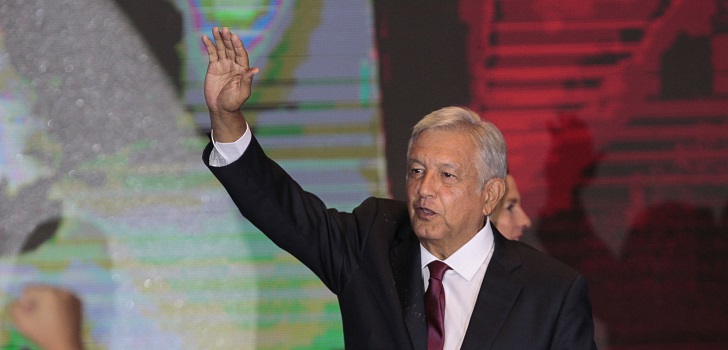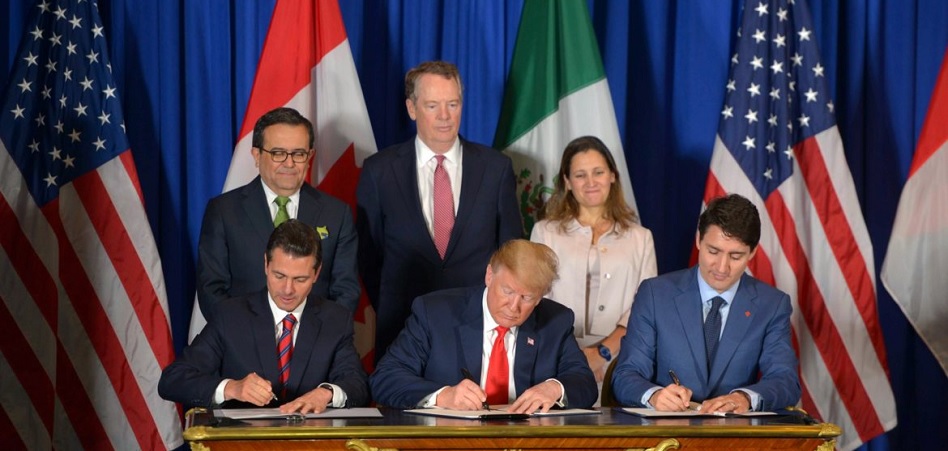2018: faces change in Latin America
From extreme right in Brazil to historical elections in Cuba, the region ends an intense year regarding electoral matters with two possible scenes: integration or of protectionism

Manuel López Obrador, Mexico’s new president
Mexico, Brazil, Colombia. All huge Latin American powers, except Argentina, replaced their presidents in 2018. A year characterised by the shift towards rightist policies of a great part of the markets and by the rise of populist leaders in countries like Brazil. The intense electoral timetable of Latin America started the 4th of February, when Costa Rica went to the polls to choose its new president.
Carlos Alvarado Quesada assumed the presidency of Costa Rica in a situation of fiscal deficit growth and a rise of criminality. All in all, the country still has one of the best predictions of growth in the region, with an estimated rise of 3.5% for 2018, according to the International Monetary Fund (IMF).
Cuba was the one to follow with historical elections. The Caribbean country faced its first post-Castro elections in which, as predicted, Miguel Díaz-Canel was elected as president. It is the first time ever since the country’s revolution that the person leading the country is not a member of the Castro family. Paraguay was the third Latin American country to host presidential elections in 2018. Mario Abdo Benítez’s narrow victory entailed the comeback of conservative party Partido Colorado into the Guarani leadership.
During the first half of the year, Venezuela also went to the polls. It was an electoral process characterised by fraud accusations in a situation of economic collapse and escalation of violence. Nicolás Maduro was elected president again with 5.8 million votes, in a polling day marked by a high degree of absenteeism: of the twenty million people called in to vote, only eight attended. The IMF disclosed in October one of the worst projections for economy in Venezuela, with a drop of its GDP of 18% in 2018.
South America’s textile hub shifts towards the right
May was the time for the most polarised polling of the year. With a latent Peace Agreement, Colombia faced a new electoral event which appointed Iván Duque as its winner in the second round after eight years of Juan Manuel Santos’ mandate. The rise to power of Álvaro Uribe’s dolphin entailed the first rightist shift in the Latin American region during 2018.
Duque inherited a country whose growth stood at 1.8% in 2017, its lowest figure in seven years. The IMF forecasts a rise of 2.8% for the Colombian economy in 2018 and of 3.6% for 2019. During his first months in la Casa de Nariño, the Colombian president’s popularity dropped by 27.2%, weighed down by measures such as an increase of VAT to basic goods.
Fashion, for its part, continues to fight its own model in the country after the continuous fall of consumption in 2017 and 2018, which entailed the retreat of international giants such as Nike or Forever21. Local players like Fabricato o Coltejer, on the other hand, continue to suffer in its accounts the downfall of the Colombian fashion market, and some have even started to go the streets in order to ask for protectionist measures in order to strengthen local production.
Second half, a test for the forces
After the Colombian elections, came Mexico and Brazil’s turn. The two greatest economic powers in Latin America changed their presidents during the second half of the year. Brazil’s elections were one of the most complex ones of the year, as the country’s favourite candidate, Lula da Silva, could not go to the polls as he was still imprisoned.
The result meant a U-turn for the country’s political history. The triumph of Jair Bolsonaro in the second round celebrated during October confirmed the arrival of rightist populism and protectionism into Latin America. Following Donald Trump’s path, Bolsonaro has based his political campaign in an extreme-right, xenophobic and protectionist speech, claiming even that Mercosur is not one of Brazil’s priorities.
The shift went the other way around for Mexico, where for the first time, a leftist president has been elected. After six years of being governed by Enrique Peña Nieto, the North American country chose Manuel López Obrador as new president with a historical record of votes. López Obrador put therefore an end to three decades of leadership constituted by the partnership between Partido Acción Nacional (PAN) and Partido Revolucionario Institucional (PRI). The country’s perspectives are set on registering growths of 2.2% in 2018 and 2.5% in 2019, ahead of the 2% rise with which it ended 2017.
The politician, who assumed the leadership the 1st of December, has already started to set in motion his package of economic measures with announcements such as the 16% rise of the minimum wage which can go even up to 50% around the region of the frontier with the United States.
More uncertainty in the region
Latin America will keep up its frenzied rate regarding elections in fiscal 2019. Uruguay, Bolivia and Argentina will be some of the region’s countries to renew their presidencies throughout the year. Uruguay will attend the polls in October to find a successor for the leftist Tabaré Vázquez, from Frente Amplio, who has been in charge since 2015.
Argentina, one of the region’s economic powers, is facing another essential electoral process after a 2018 of severe crisis and new debts with the IMF.
The entity estimates a drop of 1.6% in the Argentinean economy during 2019, where the next candidates for the presidency are still unknown, as well as whether the current mandatary, Mauricio Macri, will try to repeat his tenure. Evo Morales, for his part, will be presented in Bolivia’s reelection next year, which will entail a litmus test after the decrease of popularity he has experienced in recent years.

A change of skin for NAFTA
“The worst trade deal in the history of trade deals” as defined by Donald Trump, The North American Free Trade Agreement (NAFTA) is updated. When it seemed that the United States president would comply with his campaign promises and break the trade deal it had with Mexico and Canada, the North American giant has alternatively given his approval to a renewed treaty between the countries.
After a year of negotiations, Canada, the United States and Mexico reached an agreement in December and signed, under the frame of the G-20 meeting in Buenos Aire (Argentina) the new NAFTA. The agreement, called UMSA in the United States and CUSMA in Canada, barely presents any changes for the fashion industry, which has been holding its breath ever since the first threats of the United States president left his mouth.
The United States is the first destiny for Mexican fashion exports, entailing about 94.5% of the sector’s sales abroad. Every year, the exchange of sales between Mexico and the United States produce 502.01 billion euros on average.
The new NAFTA does not include the worst prognostics of fashion and it barely presents any changes in sectors such as dairy and automobiles
After taking a first look at the document, the United States intended to erase the possibility of using raw materials from outside Canada or Mexico for clothing items so that he could erase tariff rates and thus limit the access of Chinese products into the United States.
Another of the concerns surrounded the share of TPLs, which regulate how many metres of fabric from countries outside the UMSA can be used so that the product will continue to be considered originally from the country.
Finally, the worst predictions of the sector did not end up included in its last draft, which entails almost no changes for fashion in base to the previous one. In fact, the main differences between both agreements affect mainly dairy and automobiles.
Furthermore, the new agreement, which expires in sixteen years, includes, too, a clause by which it will be revisited and reconsidered every six years, although that would not entail an automatic expiry of the agreement as the United States initially proposed.


info@themds.com
Validation policy for comments:
MDS does not perform prior verification for the publication of comments. However, to prevent anonymous comments from affecting the rights of third parties without the ability to reply, all comments require a valid email address, which won’t be visible or shared.
Enter your name and email address to be able to comment on this news: once you click on the link you will find within your verification email, your comment will be published.